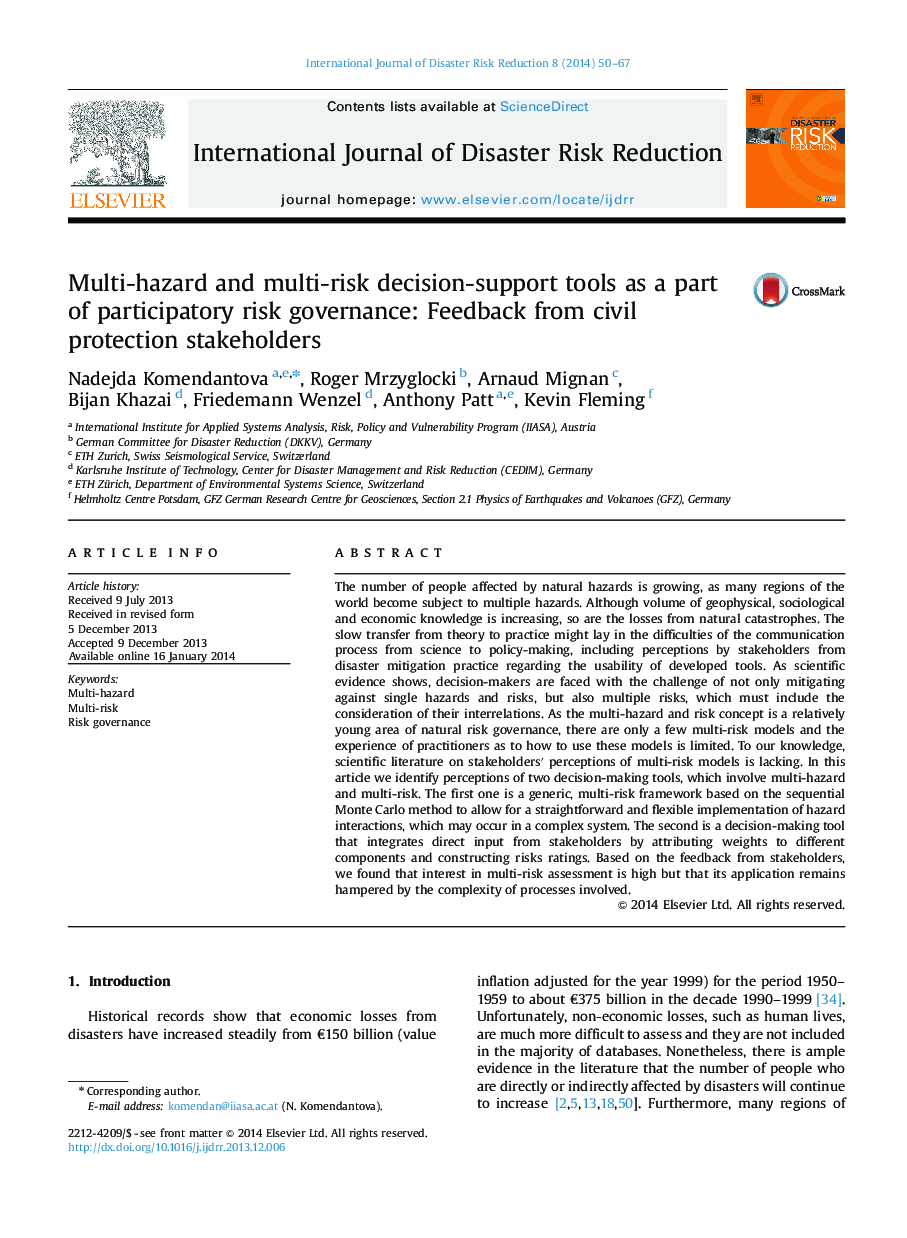| Article ID | Journal | Published Year | Pages | File Type |
|---|---|---|---|---|
| 7473648 | International Journal of Disaster Risk Reduction | 2014 | 18 Pages |
Abstract
The number of people affected by natural hazards is growing, as many regions of the world become subject to multiple hazards. Although volume of geophysical, sociological and economic knowledge is increasing, so are the losses from natural catastrophes. The slow transfer from theory to practice might lay in the difficulties of the communication process from science to policy-making, including perceptions by stakeholders from disaster mitigation practice regarding the usability of developed tools. As scientific evidence shows, decision-makers are faced with the challenge of not only mitigating against single hazards and risks, but also multiple risks, which must include the consideration of their interrelations. As the multi-hazard and risk concept is a relatively young area of natural risk governance, there are only a few multi-risk models and the experience of practitioners as to how to use these models is limited. To our knowledge, scientific literature on stakeholders' perceptions of multi-risk models is lacking. In this article we identify perceptions of two decision-making tools, which involve multi-hazard and multi-risk. The first one is a generic, multi-risk framework based on the sequential Monte Carlo method to allow for a straightforward and flexible implementation of hazard interactions, which may occur in a complex system. The second is a decision-making tool that integrates direct input from stakeholders by attributing weights to different components and constructing risks ratings. Based on the feedback from stakeholders, we found that interest in multi-risk assessment is high but that its application remains hampered by the complexity of processes involved.
Related Topics
Physical Sciences and Engineering
Earth and Planetary Sciences
Geophysics
Authors
Nadejda Komendantova, Roger Mrzyglocki, Arnaud Mignan, Bijan Khazai, Friedemann Wenzel, Anthony Patt, Kevin Fleming,
